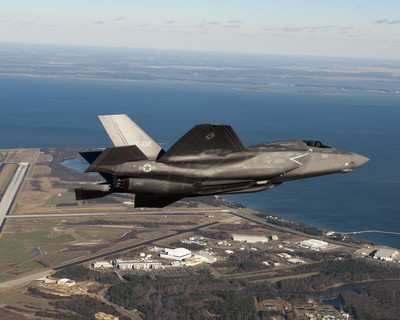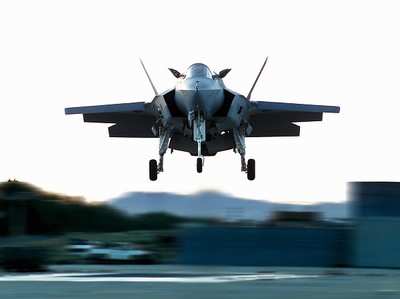New Gear Includes Everything From G-Suits And Helmets To Socks
And Underwear
Pilots at Eglin Air Force Base in Florida received measurements
for the first F-35 Lightning II joint strike fighter equipment
February 25, moving a step closer to training in the military's
newest fighter aircraft. The new pilot equipment includes
everything from underwear to cold-weather outer gear to anti-G
garments.

RFD Beaufort, the Lockheed Martin sub-contractor making the new
equipment, took controlled measurements down to the millimeter to
ensure comfort, safety and the pilot's capability to complete the
mission in any scenario. Some of the equipment used by the first
F-35 pilots will be based on legacy gear found on previous fighter
aircraft.
"The wing continues to work toward establishing the first
(Department of Defense) training center for the F-35 joint strike
fighter," said Marine Col. Arthur Tomassetti, the 33rd Fighter Wing
commander. "While measuring an individual for flight equipment
might seem like a small step, every step brings us closer to being
able to commence training at Eglin. The level of sophistication and
technology on the new equipment is indicative of the advancement
this new weapons system provides our Marines, sailors and
Airmen.
"A lot of the engineering has improved since the legacy
equipment," said Maj. Eric Smith, the 58th Fighter Squadron
assistant director of operations. "It is a great step forward with
the next generation of aircraft."
Major Smith, who has flown A-10 Thunderbolt IIs and F-16
Fighting Falcons, said receiving measurements for the F-35 was much
more detailed than previous experiences. "This seems a lot more
science based as they are taking a lot more measurements," said the
15-year Air Force veteran. "With legacy equipment, all they do is
ask for height and weight."
A normal F-35 pilot will wear flame retardant underwear, socks,
a cooling garment, flight suit, anti-exposure suit trimmed to the
individual pilot and waistcoats with pouches of drinking water,
according to a RFD Beaufort representative. The complete gear with
weapons will be about 30 pounds.

The extra efforts ensure a proper fit in case of an ejection by
the pilot. Snagging pieces of clothing at top speeds during
ejections could be detrimental to a pilot's life. Another safety
measure is making every article of clothing flame resistant. The
clothing is tested at 1,000 degrees Celsius for four seconds.
Upgraded legacy flight suits now feature new arm restraints to
prevent the pilot's arms from flaying in the event of an ejection,
said Graham Robertson, a joint strike fighter trials and integrated
logistics manager for RFD Beaufort. "If this equipment had been
around in the past, we would have had a lot of pilots saved," he
added.
The three pilots measured for the first pilot gear represented
each military branch who will be at the first DOD joint strike
fighter training center. "It is an improvement to legacy
equipment," said Marine Maj. Tyler Bardo, a 501st Marine Fighter
Attack Squadron aircraft maintenance officer. "It looks a little
different. It looks more comfortable."
The pilots expressed their excitement for the new equipment and
the technology that comes with it. "The technology is a great
leap," said Navy Capt. Mike Saunders, the 33rd FW Operations Group
deputy commander. "I think the biggest thing is the helmet. I
actually tried it on for the first time today. It looks big and
gargantuan, but it is really well-balanced."

Fitting the helmet is an entirely different process where laser
scanners will map the pilots' head, said a VSI representative. VSI
is the Lockheed Martin sub-contractor working on the F-35 helmet.
The helmet, made of carbon fiber and Kevlar, features cameras
equipped with night vision and a display system capable of
projecting information such as airspeed onto the pilot's visor,
according to a recent article in 'Airman' magazine.
 ANN's Daily Aero-Linx (05.02.24)
ANN's Daily Aero-Linx (05.02.24) ANN's Daily Aero-Term (05.02.24): Touchdown Zone Lighting
ANN's Daily Aero-Term (05.02.24): Touchdown Zone Lighting Aero-News: Quote of the Day (05.02.24)
Aero-News: Quote of the Day (05.02.24) ANN FAQ: Contributing To Aero-TV
ANN FAQ: Contributing To Aero-TV NTSB Final Report: Cirrus Design Corp SR20
NTSB Final Report: Cirrus Design Corp SR20





